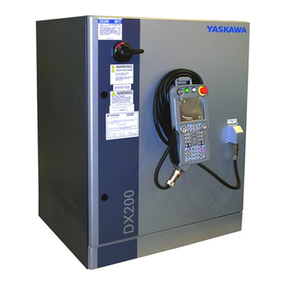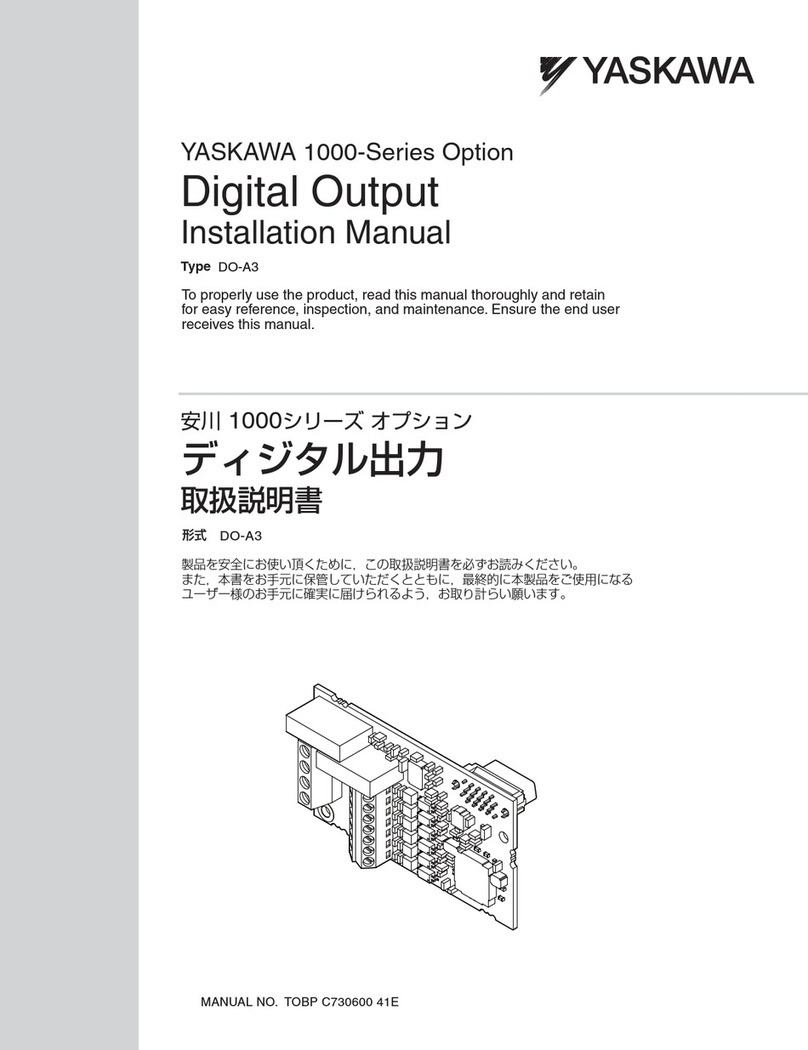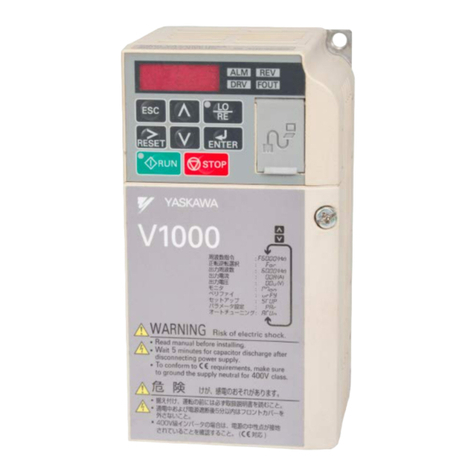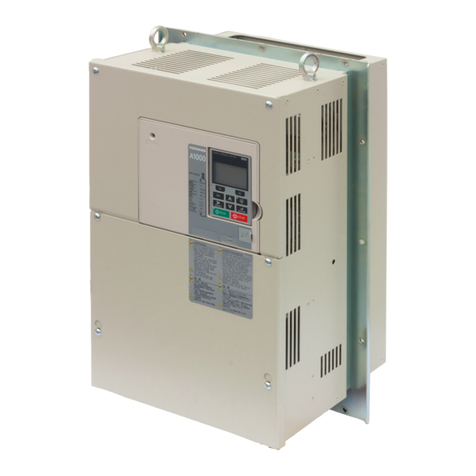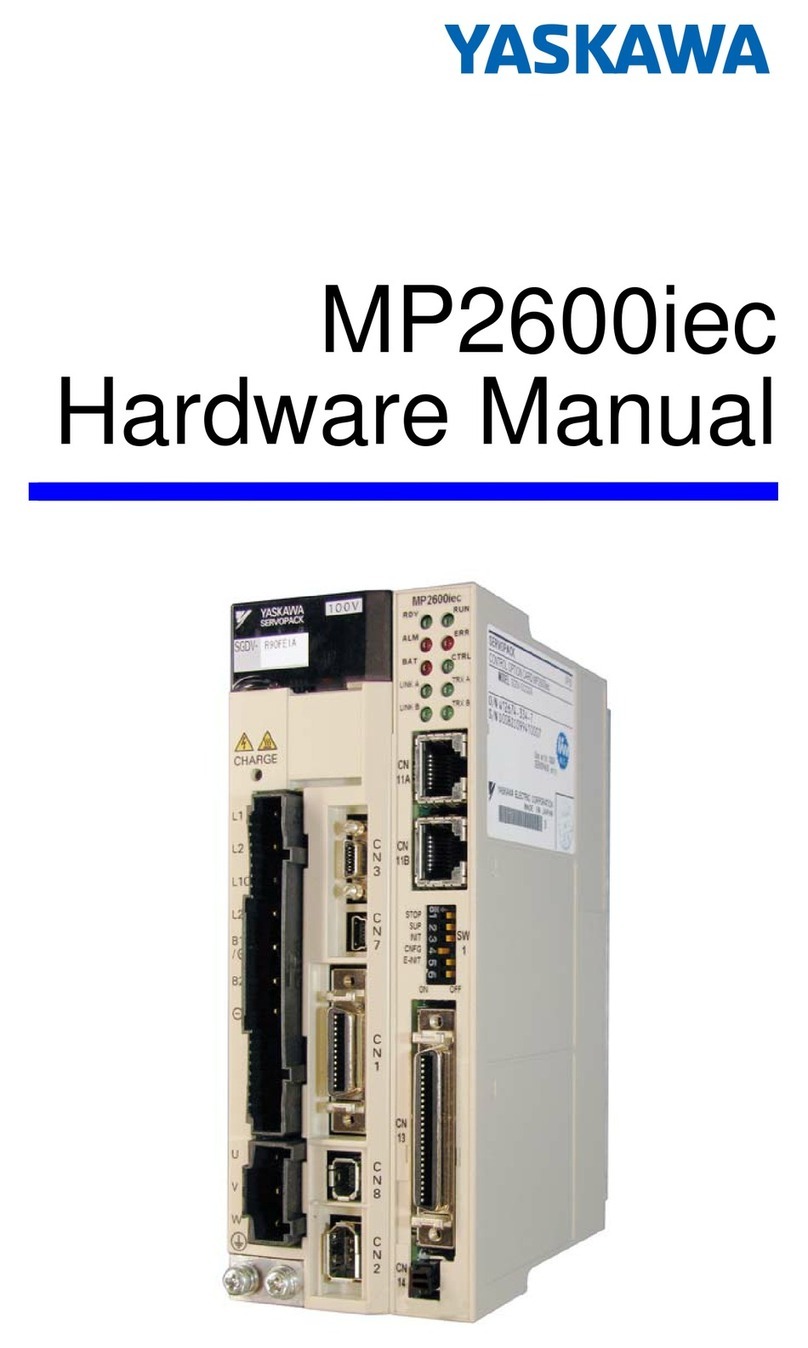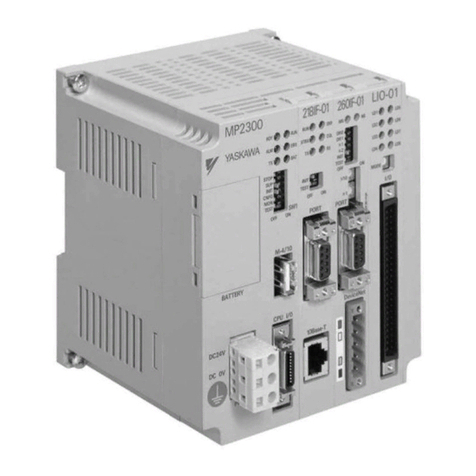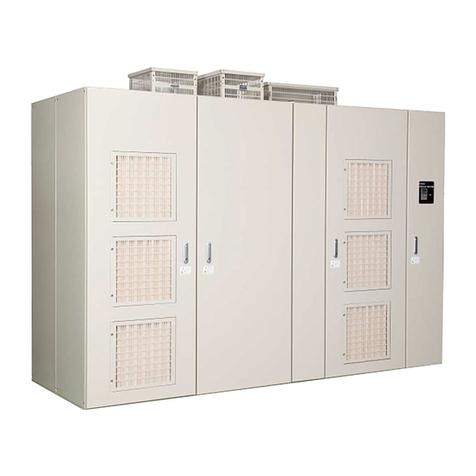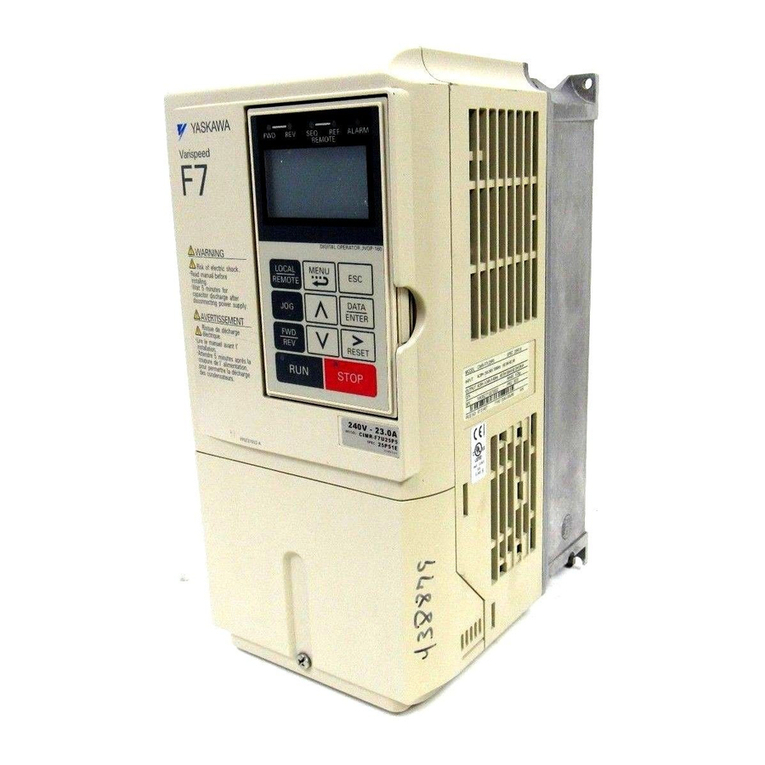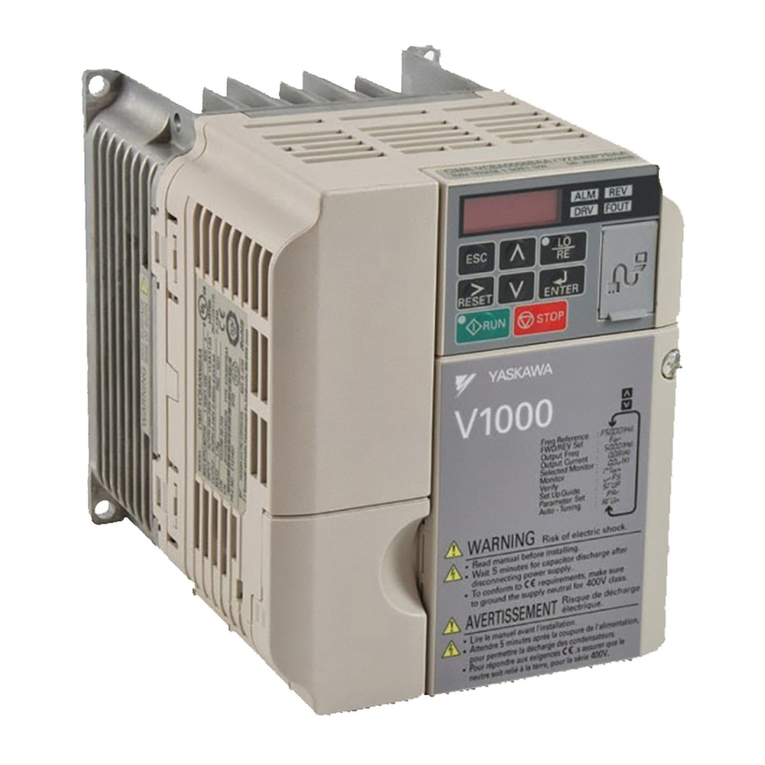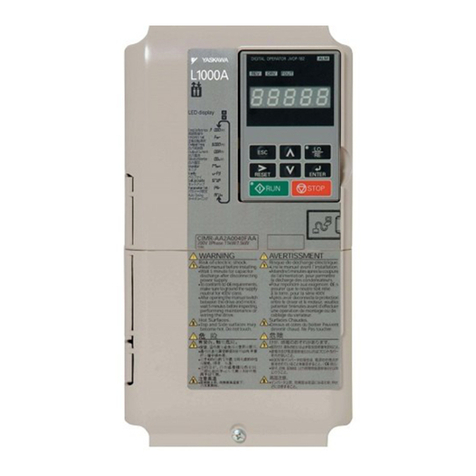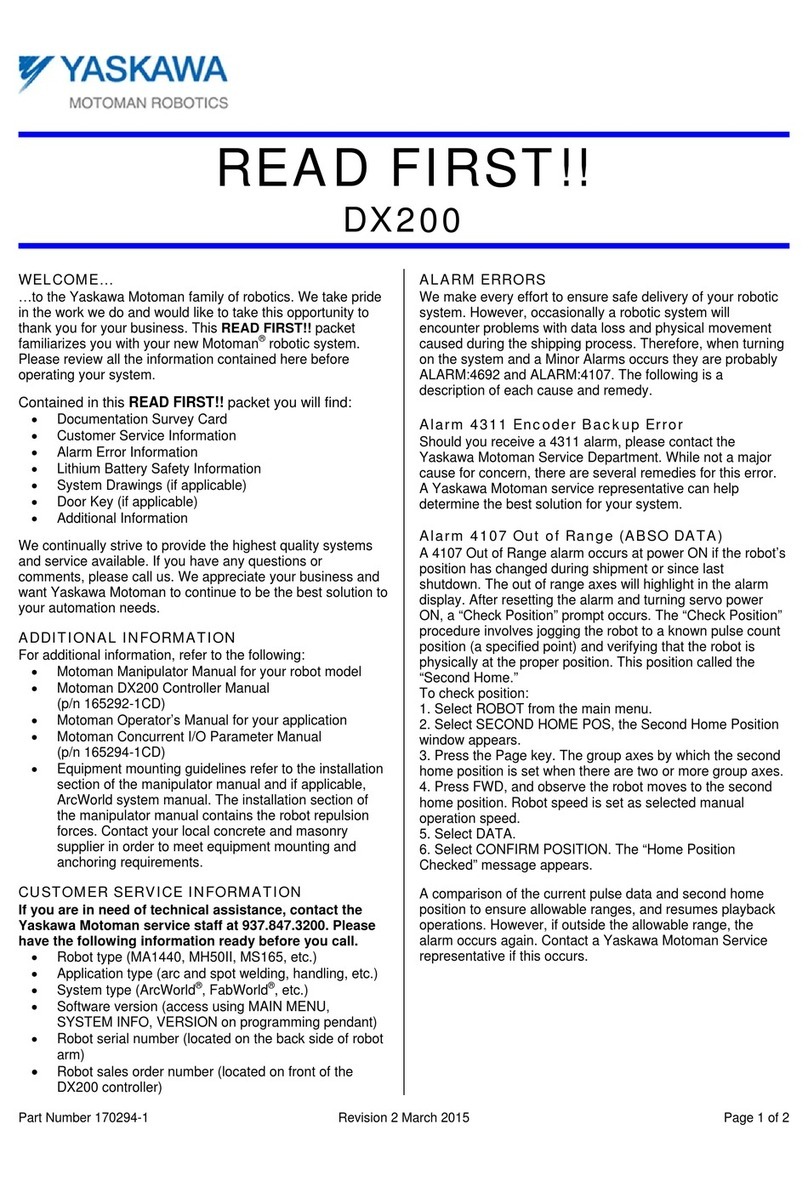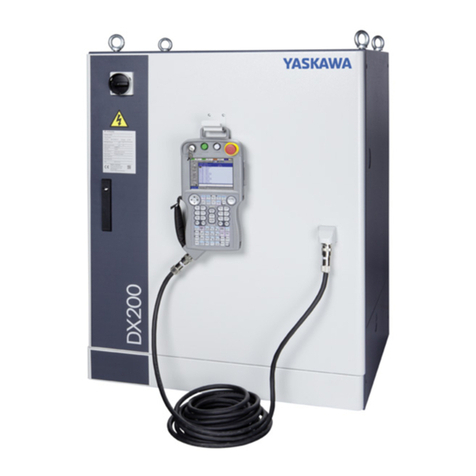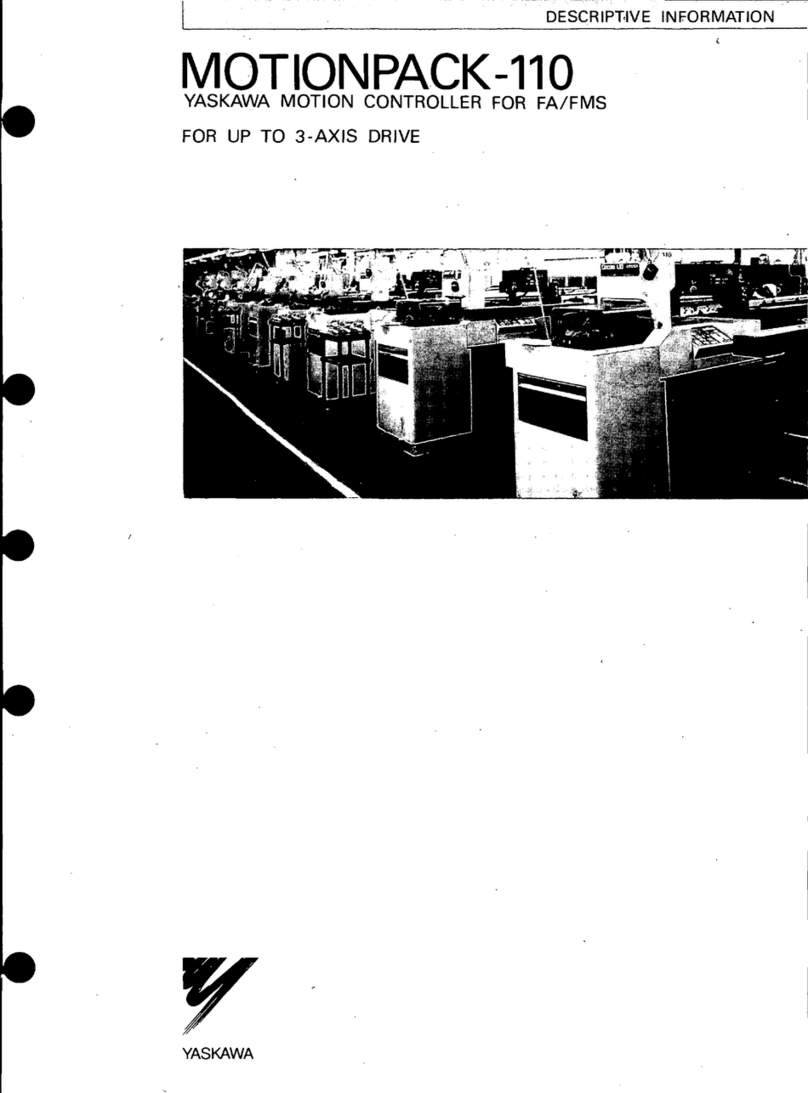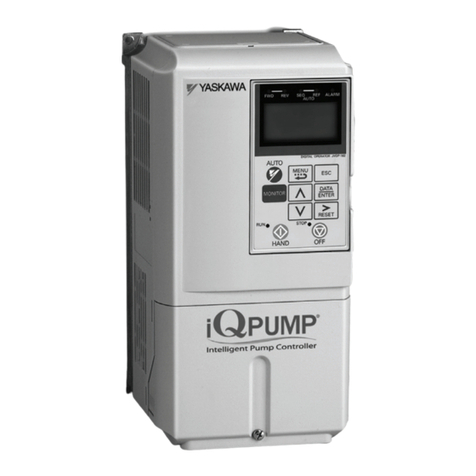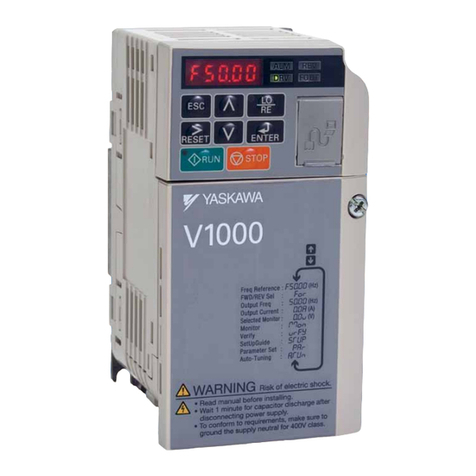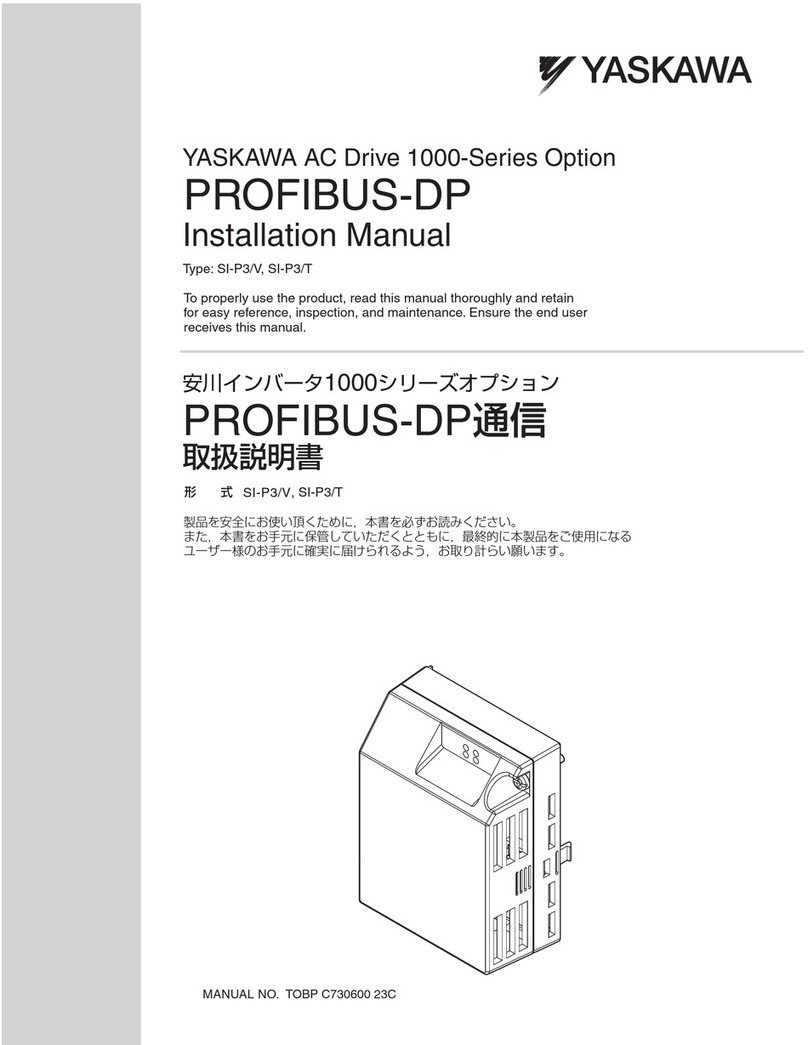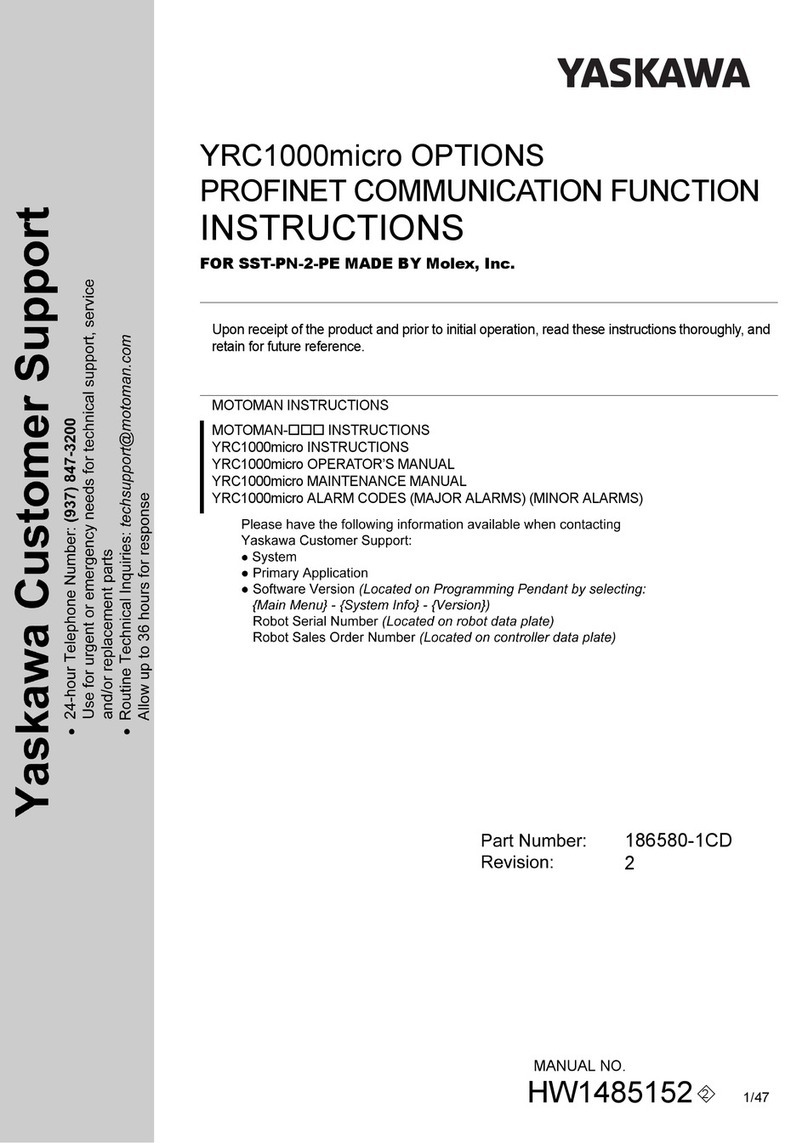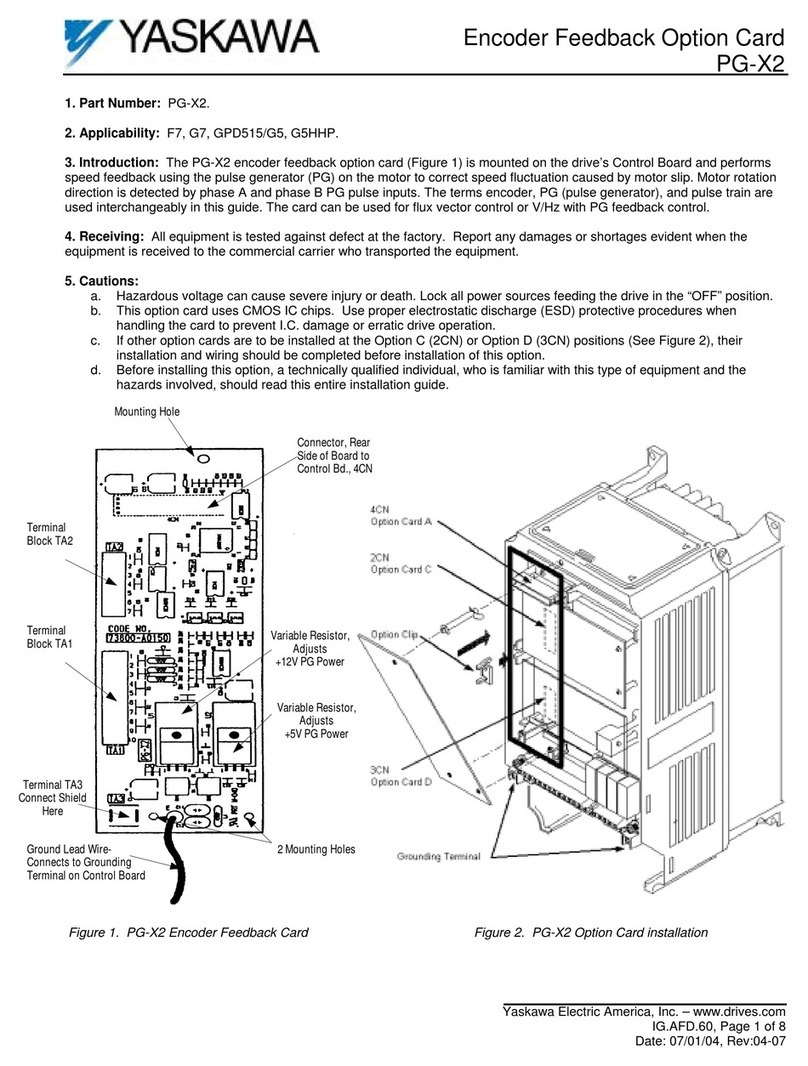1. CONFIGURATION
1.1 SYSTEM CONFIGURATION
The system configuration of YASNAC J50 is shown below.
ASNAC J50
CNC
UNIT CNC
$IjIP~fTOR S
FEED
Wi:p
~.-. —._
—.— .—
;WJ;LE
UNIT
I I ~
L_._..Jlll!!E!&-
11/0 L---u w;%’. )
—.— .iL._. —._
MACHINE
➤✎✿✎✎✍
+=
FEED
MOTOR
+-El
MACHINE
EQUIPMENT
i-.-.-.–
Fig. 1.1 System Configuration of
YASNAC J50
2. ENVIRONMENTAL CONDITIONS
The following conditions are for locations where the control panel
is installed by the machine builder. Therefore, follow Par. 4
“CABINET CONSTRUCTION DESIGN” in the design process so
that these conditions will be satisfied.
(1) Ambient Temperature
During operation: Oto 45
During storage or transport: -20 to +60
Even if ambient temperature is less than 45, do not install the
control panel under direct sunlight, near aheating element or
outdoor.
(2) Relative Humidity: 10 to 90 %(Non-condensing)
(3) Vibration: 4.9m/s2 or less during operation
(4) Atmosphere: Do not use the control panel under environment
with alot of dust and dirt or with high density of coolant or
organic solvent.
3. CABINET CONSTRUCTION DESIGN
Take the following into consideration when cabinets to contain the
CNC unit and other units are designed.
(1) Make sure that the cabinets are of atotally-enclosed type. The
feed servo unit and spindle drive unit can be open type cabinets
provided the following considerations are made:
(a) An air filter is provided at the external air inlet.
(b) Forced air used in the inside is not blown directly on the units.
Direct blowing of air may cause oil mist or dust to settle on the
units and might cause failures.
(c) The air discharge outlet should be positioned where dust and oil
mist do not enter. The heat sink of the feed servo and spindle
drive units can be installed outside for higher thermal
efficiency. The cabinets should be of atotally-enclosed type to
improve reliability.
(2) Design the cabinet so that the difference between the inner-air
temperature and ambient temperature is less than 10°C. Read
Par. 4for cabinet design to accommodateheat.
(3) Install afan inside totally-enclosed cabinets to improve the
internal cooling efficiency and to prevent localized temperature
increases by circulating air inside the cabinets.
The velocity of the circulating air should be greater than 2m/s
on the surfaces of the printed circuit boards. Forced air should
not blow directly on the printed circuit boards.
(4) Provide spacing of more than 100 mm between components and
cabinet walls for smooth flow of air.
(5) Seal the cable openings, doors, etc. completely. The CNC
operator’s panel operates at aparticular yhigh voltage and
collects dust in the air. Special caution is needed.
The cabinet for mounting the CNC opemtor’s panel requires the
following precautions:
(a) Use packing material on the mounting surface to eliminate gaps.
(b) Use packing material in the cable openings and doors.
(6) Magnetic Deflection of CRT Display
CRT displays are sometimes deflected due to external magnetic
influences. Sources that generate magnetic fields, such as
transformers, reactors, fans, solenoid switches and relays, and
AC power cables should be positioned more than 300 mm from
the CNC operator’s panel. This distance is optimum and may
vary for each circumstance. Determine the component layout
beforehand.
1
